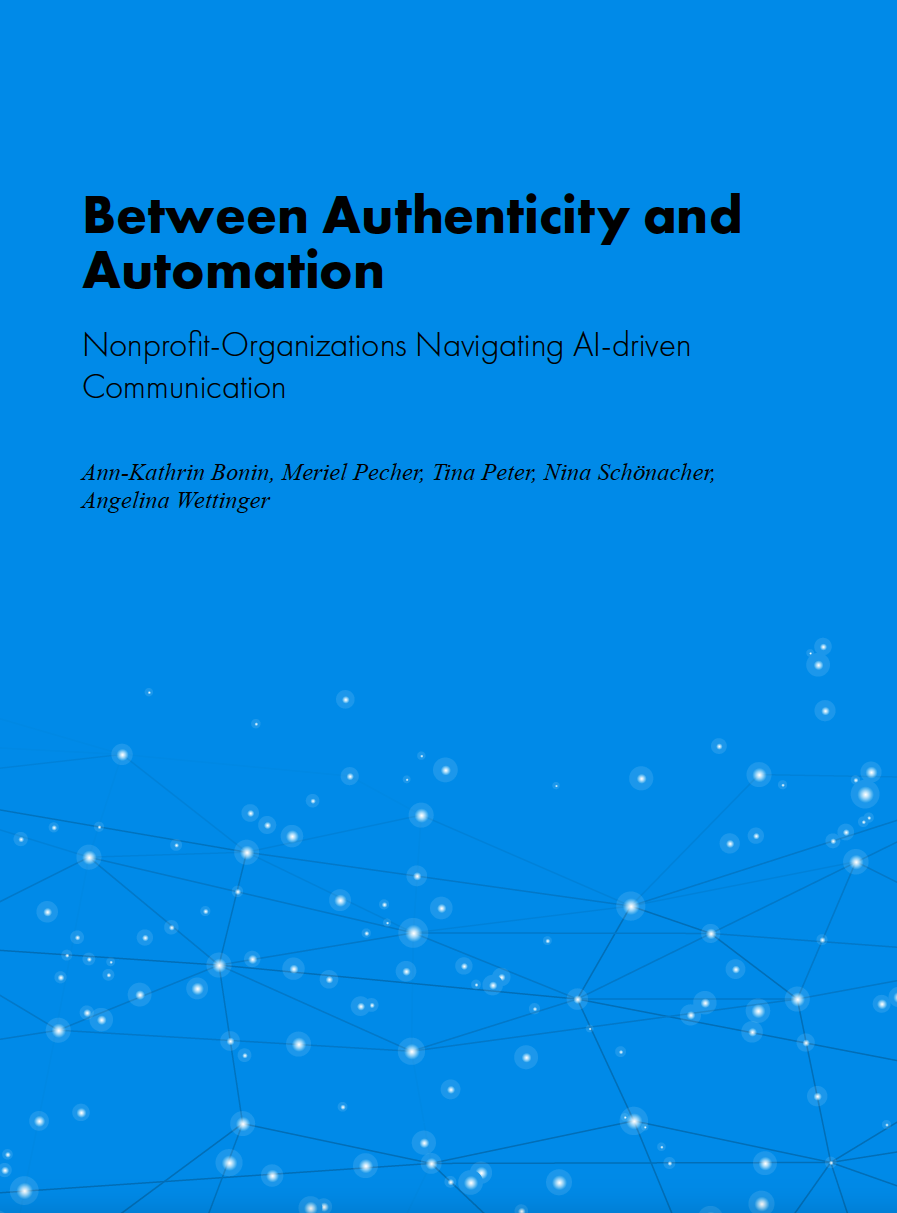Authenticity as Strategy in the Age of AI Content
For mission-driven organizations, storytelling has always been more than a marketing tool. It is how communities are represented, how donors connect, and how the mission comes to life. Yet the rise of artificial intelligence is reshaping how those stories are made.
AI now drafts emails, edits videos, and translates campaign content at speeds that once required entire teams. For many nonprofits, this feels like relief. It offers efficiency, consistency, and the ability to scale communications with limited resources. But it also raises an uncomfortable question: what happens to authenticity when creation becomes automated?
A recent study by Bonin and colleagues, Between Authenticity and Automation: Non-profit Organisations’ AI-supported Content Creation (2025), explores this tension directly. The researchers interviewed communications managers at German nonprofits to understand how AI is changing their content practices. What they found reflects a growing challenge shared by mission-based organizations around the world.
Automation Is Already Here
According to the study, AI tools have quietly become part of everyday workflows. Teams use them to draft social posts, summarize reports, check tone, or translate donor messages. These uses are often informal, unregulated, and sometimes even invisible.
For many communications professionals, the benefits are clear. AI reduces time pressure and fills gaps where capacity is limited. But beneath that relief, the researchers found a concern that resonates deeply across mission-driven sectors: efficiency can flatten voice.
Messages produced with AI tend to sound clean, polished, and on-brand, yet lack the warmth, vulnerability, or lived experience that connects with audiences. The language feels correct but detached from the human reality the organization represents.
The Trade-Offs Between Automation and Authenticity
The study highlights several trade-offs that nonprofit communicators are beginning to navigate.
1. Efficiency versus Empathy
AI can summarize, rephrase, and optimize, but empathy often lives in the details. In mission storytelling, the power of a quote, the rhythm of a pause, or the imperfection of a real voice carries emotional weight. Bonin’s participants described a fear of losing that texture. Automation may save time but risks stripping away the feeling that someone is actually speaking.
2. Scale versus Specificity
AI enables organizations to produce more content in more formats and languages. That scale is valuable, but it can also create sameness. When every piece of writing is optimized to perform, stories begin to sound alike. The study calls this the “homogenizing effect” of automation, where tone and structure start to override individuality.
3. Consistency versus Creativity
Consistency is a strength of AI systems, but too much uniformity can dilute creativity. Several communications managers noted that while AI helped maintain brand voice, it also discouraged experimentation. The most memorable mission stories rarely come from perfect phrasing. They come from a spark of surprise or imperfection that makes the story feel real.
Lessons for Mission-Driven Teams
The organizations that navigated these trade-offs most effectively approached AI as a collaborator, not a replacement. Bonin and colleagues observed that successful teams created boundaries and principles around their use of automation. Their practices offer a few lessons for anyone producing impact-driven content today:
1. Define what authenticity means for you.
Every organization has a voice that reflects its community and values. Write that definition down. Clarify which stories must always be told in human terms, and which processes AI can support without risk.
2. Use AI for scaffolding, not storytelling.
AI works best as a planning tool. It can outline, suggest, or summarize. The human storyteller should still make the creative and ethical decisions. Think of AI as setting the table, not serving the meal.
3. Build transparency into your process.
As audiences grow more aware of AI-generated content, transparency becomes part of trust. When you share how you use AI responsibly, you model the integrity your mission stands for.
4. Preserve space for human friction.
Fast content can be efficient but not always effective. Keeping moments of review, feedback, and collaboration ensures the message carries the human connection that defines your organization.
Authenticity as Strategy
The takeaway from Bonin’s study is simple but powerful: in an age of automation, authenticity itself becomes a strategy.
As AI systems accelerate production, the most meaningful stories will be the ones that still feel human. For nonprofits, this is not just about brand differentiation. It is about trust. When supporters sense that real people are behind the message, they are more likely to believe in the mission.
AI is here to stay. The question is not whether mission-driven teams should use it, but how to use it with intention. The organizations that treat authenticity as a core value rather than a nostalgic ideal will lead the next era of storytelling.


